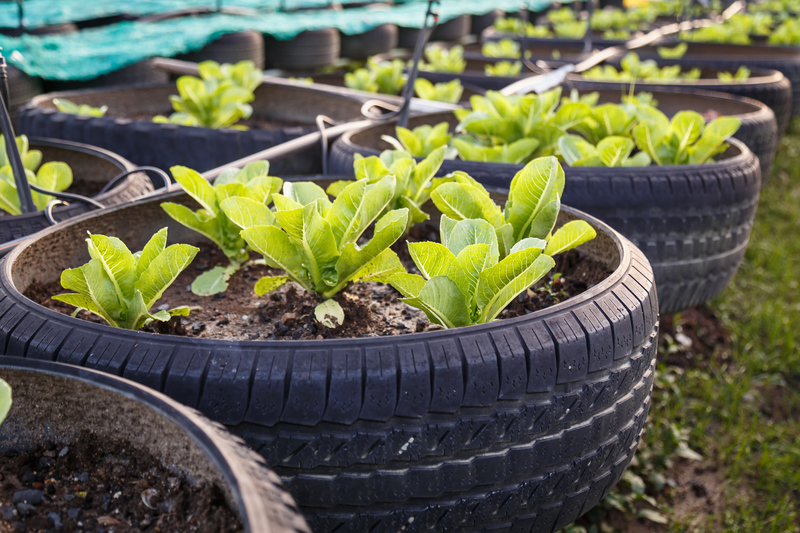Creative Approaches to Utilizing Wood Waste
Wood waste is a byproduct generated from various wood-related activities such as logging, milling, and carpentry. Often perceived as a burden, this waste can be a valuable resource when utilized creatively. Transforming wood waste into useful products not only helps in reducing environmental impact but also opens up new avenues for business and innovation. In this article, we explore numerous creative approaches to utilizing wood waste effectively and sustainably.
Understanding the Impact of Wood Waste
Before diving into creative solutions, it's important to understand the impact that wood waste has on the environment. Large quantities of sawdust, off-cuts, bark, and chips are often discarded, contributing significantly to landfill waste. Moreover, when wood decomposes, it releases methane, a potent greenhouse gas. By implementing strategies to reuse and recycle wood waste, we can mitigate these environmental threats and move towards a more sustainable future.
Recycling and Reusing Wood Waste
Recycling is one of the most effective ways to handle wood waste. Here are some methods to recycle and reuse wood waste:
- Mulching: Wood chips and sawdust can be transformed into mulch, which serves as an excellent ground cover for gardening and landscaping.
- Particleboards: Wood waste can be used to manufacture particleboards, an essential material for making furniture and construction.
- Pallets: Waste wood can be upcycled into pallets, which are crucial in the logistics and shipping industries.
- Composting: Utilizing sawdust and smaller waste chips in compost can enhance the decomposition process and enrich the soil.
Innovative Products from Wood Waste
Innovation is the key to unlocking the potential of wood waste. Several companies and entrepreneurs are pioneering unique products derived from wood waste, including:
- Sustainable Fashion: Marrying fashion with sustainability, certain brands are creating eco-friendly fabrics made from wood pulp and waste.
- Biodegradable Plastics: Scientists are developing bio-plastics using lignin, a component found in wood waste, which provides a sustainable alternative to traditional plastics.
- Bioenergy: Converting wood residues into bioenergy offers a renewable energy source. Wood pellets are a popular biomass fuel used in heating systems.
- Wooden Crafts: Artisans across the globe are turning to woodworking, crafting beautiful pieces from what was once deemed waste.

The Role of Technology in Wood Waste Management
Technology plays a crucial role in optimizing the utilization of wood waste. Advanced processing techniques such as pyrolysis and gasification convert wood waste into valuable chemicals and fuels. Additionally, AI and machine learning are being used to improve wood waste management by predicting waste generation patterns and optimizing recycling processes.
Pyrolysis and Gasification
Pyrolysis and gasification are chemical processes that break down wood waste into simpler substances. These methods not only reduce the volume of waste but also produce useful byproducts:
- Biochar: A solid byproduct used in agriculture to improve soil health.
- Syngas: A type of synthetic gas that can be used as a renewable energy source.
- Bio-oil: Can be refined into a variety of chemicals and fuels.
Machine Learning in Waste Management
Machine learning algorithms are being integrated into existing waste management systems to enhance their effectiveness. These algorithms help in:
- Predicting waste generation: Accurately forecasting wood waste production helps in planning and minimizing excess waste.
- Sorting waste effectively: Advanced sorting technology ensures that the maximum amount of wood can be recycled or repurposed.
- Optimizing recycling processes: Reducing the inefficiencies in recycling helps in utilizing wood waste more efficiently and sustainably.
Opportunities in Wood Waste Entrepreneurship
As global demand for sustainable products rises, so does the potential for entrepreneurship in wood waste utilization. Start-ups focusing on innovative uses for wood waste can tap into several markets:
- Eco-Construction: Companies creating building materials from wood waste are pioneering sustainable architecture solutions.
- Renewable Energy: Enterprises generating biomass energy present a green alternative to fossil fuels.
- Zero Waste Packaging: Packaging solutions made from wood waste can replace single-use plastics.
Furthermore, by adopting a circular economy model, businesses can ensure complete utilization of wood, minimizing waste and generating economic value. This model emphasizes designing products that can be either fully recycled or reused, thus creating a closed-loop system.

Community Involvement in Wood Waste Solutions
Community initiatives play a pivotal role in wood waste management. Educational programs raise awareness about the benefits of recycling and repurposing wood waste, encouraging local participation in sustainable practices.
Local Workshops and Community Gardens
- Workshops: Hosting woodworking workshops encourages community members to create functional items from wood waste.
- Community Gardens: Using wood waste for composting and mulching benefits community gardens, promoting local food production.
Conclusion
The potential of wood waste is vast and largely untapped. By integrating technology, fostering innovation, and embracing community involvement, we can unlock new creative approaches to utilize wood waste effectively. Not only will these solutions help in reducing environmental impact, but they will also contribute significantly to economic growth and sustainability. As society continues to strive towards a greener future, the role of wood waste utilization holds immense promise.